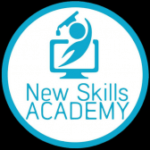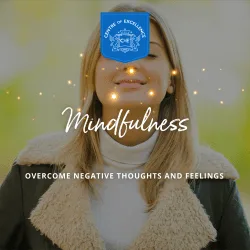In today’s fast-paced, technologically driven society, digital detox has gained significant attention. Digital overload refers to the overwhelming exposure to digital screens and devices that many individuals experience daily. This constant engagement with technology, whether through smartphones, computers, or tablets, can lead to a host of mental and physical health issues.
Digital Detox
The effects of digital overload are multifaceted and pervasive. On a mental level, excessive screen time is linked to increased stress, anxiety, and a decline in overall mental well-being. The constant influx of information and notifications can create a sense of urgency and distraction, making it difficult for individuals to focus and relax. Physically, prolonged use of digital devices can result in eye strain, disrupted sleep patterns, and musculoskeletal problems due to poor posture.
Given these adverse effects, taking regular breaks from screens and engaging in relaxation practices is crucial to maintaining a balanced lifestyle. The importance of digital detox lies in its potential to restore mental clarity, improve physical health, and foster a sense of well-being. Individuals can reduce stress by intentionally disconnecting from digital devices and creating more opportunities for meaningful, offline interactions.
The increasing dependency on digital devices in today’s world is undeniable. From work-related tasks to social interactions, our lives are intertwined with technology. While these advancements have brought convenience and connectivity, they also necessitate mindfulness in managing screen time. Digital detox is not about completely abandoning technology but finding a harmonious balance that prioritizes mental and physical health.
In the following sections, we will explore various strategies to manage digital overload effectively. These practical tips aim to help individuals regain control over their digital habits, promoting overall relaxation and well-being.
Unparalleled online learning experiences, New Skills Academy!
Recognizing the Signs of Digital Overload
In our increasingly digital world, understanding the signs of digital overload is crucial for maintaining overall well-being. Digital overload manifests through both physical and mental symptoms, often disrupting various facets of daily life. One of the most common physical indicators is eye strain, which can result from prolonged screen time. This condition, often referred to as “digital eye strain” or “computer vision syndrome,” may cause discomfort, blurred vision, and even headaches. According to the American Optometric Association, nearly 59% of individuals who routinely use digital devices experience symptoms of digital eye strain.
Another prevalent physical symptom is sleep disturbances. The blue light emitted from screens can interfere with the production of melatonin, the hormone responsible for regulating sleep. This disruption can lead to difficulty falling asleep and poor sleep quality, which in turn affects overall health and productivity. A study published in the Journal of Clinical Sleep Medicine found that individuals who use electronic devices before bed are more likely to experience insomnia and reduced sleep duration.
Mental and emotional symptoms are equally significant when recognizing digital overload. Anxiety and stress are common outcomes of constant connectivity. The pressure to respond to notifications, emails, and messages can create a perpetual state of alertness, contributing to heightened stress levels. Furthermore, the constant barrage of information can overwhelm the brain, leading to decreased productivity and a reduced ability to focus. A study by the University of California, Irvine, revealed that it takes an average of 23 minutes to regain focus after an interruption, underscoring the impact of digital distractions on efficiency.
In addition to these mental and physical symptoms, emotional well-being can also be compromised. Excessive screen time and digital engagement can lead to feelings of isolation and reduced face-to-face interactions, which are essential for emotional health. Recognizing these signs early and incorporating relaxation practices, such as digital detoxes, can significantly improve one’s mental and physical state, contributing to a more balanced life.
Setting Boundaries with Technology
In today’s digitally driven world, creating healthy boundaries with technology is essential for maintaining well-being. One effective strategy is to designate specific times for device usage. For instance, scheduling tech-free periods during meals or before bedtime can significantly enhance relaxation and promote better sleep hygiene. This approach helps to disconnect from the constant influx of digital information, allowing individuals to unwind and focus on personal interactions.
Another practical tip is to establish tech-free zones within the home. Areas such as the dining room, bedroom, or living room can be designated spaces where digital devices are not permitted. This creates a sanctuary for relaxation practices and encourages face-to-face communication, fostering a deeper connection with family and friends. Implementing such zones can also reduce the temptation to check devices constantly, contributing to a healthier balance between online and offline activities.
Leveraging technology to limit screen time can also be beneficial. Numerous apps and built-in device settings are available that monitor and restrict usage. These tools can be customized to set daily limits for social media, gaming, or other non-essential activities, helping users become more mindful of their digital consumption. By setting these constraints, individuals can prioritize tasks that contribute to their well-being and reduce the risk of digital overload.
In professional environments, establishing boundaries is equally important. Setting clear guidelines for email and messaging response times can prevent the blurring of work-life boundaries. For example, avoiding the use of work emails outside of office hours can help preserve personal time and reduce stress. Encouraging regular breaks away from screens during the workday can also enhance productivity and mental health.
Overall, integrating these strategies into daily routines can significantly improve well-being by fostering a balanced relationship with technology. By setting boundaries, individuals can enjoy the benefits of digital connectivity while safeguarding their mental and emotional health.
Mindfulness Courses by the Centre of Excellence
Discover the power of mindfulness with our Diploma courses offered by the Centre of Excellence. These carefully structured programs are designed to guide you through the fundamentals of mindfulness, helping you cultivate a balanced, focused, and fulfilling life.
Mindfulness and Digital Consumption
In today’s digital age, the pervasive use of devices has made it increasingly important to manage our digital consumption effectively. Mindfulness plays a crucial role in this process, offering a powerful tool to help individuals stay present and make conscious choices about their digital habits. By cultivating mindfulness, we can foster a healthier relationship with technology, enhancing our overall well-being.
One effective technique to manage digital consumption is mindful browsing. This practice involves being fully aware of our online activities and making deliberate choices about the content we engage with. Instead of mindlessly scrolling through social media or news feeds, we can set specific intentions for our online time. For example, we might decide to read articles that contribute to our personal growth or watch videos that provide relaxation and inspiration.
Being conscious of the time spent on devices is another essential mindfulness practice. Setting time limits for digital activities can prevent the overwhelming sense of digital overload. Utilizing tools such as app usage trackers or screen time monitors can help us stay within these limits. Additionally, scheduling regular breaks away from screens can refresh our minds and reduce mental fatigue, further promoting relaxation and well-being.
Choosing content that adds value to our lives is a vital aspect of mindful digital consumption. This involves critically evaluating the information and entertainment we consume, ensuring it aligns with our values and contributes positively to our mental and emotional health. By curating our digital environments thoughtfully, we can create a more enriching and balanced online experience.
Several exercises can help readers stay present and reduce mindless scrolling. One such exercise is the “5-4-3-2-1” grounding technique, where an individual identifies five things they can see, four things they can touch, three things they can hear, two things they can smell, and one thing they can taste. This practice shifts attention away from screens and anchors awareness in the present moment, fostering relaxation and mental clarity. Another beneficial exercise is setting a daily intention for digital use, such as prioritizing educational content or limiting social media interactions, which can guide more mindful and purposeful consumption.
Incorporating mindfulness into our digital habits can significantly enhance our well-being, helping us navigate the digital landscape with greater awareness and intentionality.
Unparalleled online learning experiences, New Skills Academy!
Incorporating Offline Activities
Engaging in offline activities is a pivotal strategy to counteract the pervasive effects of digital overload. In a world where screens dominate both our professional and personal lives, it is essential to unplug and reconnect with experiences that foster overall well-being. Hobbies, physical activities, and social interactions offer a valuable respite from the digital deluge, promoting a more balanced and fulfilling life.
Participation in hobbies such as painting, gardening, or reading can serve as a therapeutic escape from the constant notifications and digital noise. These activities not only provide relaxation but also stimulate creativity and mental clarity. For instance, taking up painting can be a meditative practice, allowing individuals to express emotions and unwind. Similarly, gardening offers a tactile connection with nature, reducing stress and enhancing mindfulness.
Physical activities are another cornerstone of effective digital detox. Regular exercise, whether it be jogging, yoga, or team sports, contributes significantly to physical health and emotional well-being. Physical exertion releases endorphins, the body’s natural mood elevators, which can alleviate the anxiety often associated with digital overload. Yoga, in particular, combines physical movement with mindfulness practices, offering dual benefits of relaxation and physical fitness. Personal anecdotes frequently highlight the transformative effects of such activities; for instance, a colleague who took up running reported not only improved health but also a sharpened focus and reduced screen dependency.
Social interactions, too, play a crucial role in mitigating the effects of digital overload. Engaging in face-to-face conversations, participating in community events, or simply spending quality time with family and friends can foster a sense of connection and support. These interactions help in building strong emotional bonds and provide a sense of belonging, which is often lacking in virtual communications. For example, a weekend spent hiking with friends can offer both physical exercise and meaningful social engagement, creating memorable experiences that digital interactions cannot replicate.
By integrating these offline activities into daily routines, we can achieve a healthier balance between the digital and physical realms, ultimately enhancing our overall well-being and leading a more enriched life.
Using Technology to Combat Digital Overload
While the concept of digital detox may initially suggest a complete retreat from technology, it is essential to acknowledge that certain technological tools can be instrumental in managing digital overload. These tools are designed to foster digital well-being and encourage relaxation practices, helping users maintain a balanced relationship with their devices.
Screen time trackers, for example, provide valuable insights into how much time one spends on various applications and platforms. Apps like Apple’s Screen Time and Google Digital Wellbeing offer detailed reports, enabling users to set limits on app usage and receive notifications when they exceed their predefined boundaries. These features allow individuals to become more conscious of their digital habits and make informed decisions to promote healthier usage patterns.
Meditation apps are another excellent resource for combating digital overload. Applications such as Muse and Flowtime provide guided meditation sessions, breathing exercises, and sleep aids. These tools are specifically designed to help users unwind, reduce stress, and improve their overall mental well-being. By incorporating short meditation breaks into their daily routine, individuals can cultivate a sense of relaxation and mindfulness, even amidst their busy schedules.
Productivity tools that encourage breaks are also crucial in managing digital overload. Apps like the Pomodoro Timer and Focus Booster utilize the Pomodoro Technique, which involves working in focused intervals, typically 25 minutes, followed by a short break. This method not only enhances productivity but also ensures regular intervals of rest, helping to mitigate the effects of prolonged screen time. Additionally, apps like Forest gamify the process of staying focused by allowing users to grow a virtual tree for each uninterrupted work session, thus providing a visual representation of their productivity efforts.
In conclusion, leveraging technology to combat digital overload is a practical and effective strategy. By using screen time trackers, meditation apps, and productivity tools, individuals can foster a healthier digital lifestyle, ultimately promoting relaxation and well-being.
Yoga Teacher Training Diploma Course
If you’re passionate about yoga and looking to deepen your practice, the Yoga Teacher Training Diploma Course by the Centre of Excellence is the perfect fit. This comprehensive program is designed to equip you with the knowledge and skills to teach yoga with confidence.
Creating a Digital Detox Plan
In today’s hyper-connected world, cultivating a digital detox plan is essential for enhancing well-being and promoting relaxation practices. A structured approach can help in effectively managing digital overload. The first step involves conducting a comprehensive digital audit. This entails tracking daily screen time across various devices and applications. By understanding specific usage patterns, individuals can identify which activities consume the most time and may need moderation.
Once the audit is complete, the next step is to set realistic goals. These goals should be attainable and aligned with one’s lifestyle. For instance, a feasible goal may be to reduce social media usage by 30 minutes each day or to have screen-free meals. It’s crucial to avoid setting overly ambitious targets, as they can lead to frustration and may undermine the detox efforts.
Gradually reducing screen time is vital for a successful digital detox. Abrupt changes can be challenging to sustain, making it essential to implement incremental adjustments. For example, start by designating specific times of the day as “tech-free” periods, gradually increasing their duration over time. Incorporating alternative activities, such as reading a book, engaging in outdoor exercises, or practicing mindfulness, can help in smoothly transitioning away from screen dependence.
Here is a sample digital detox plan:
Day 1-2: Conduct a digital audit and monitor screen time.
Day 3-7: Set realistic goals and reduce screen time by 15 minutes each day.
Week 2: Establish tech-free periods, starting with 30 minutes and gradually extending.
Week 3: Replace screen time with relaxation practices, such as meditation or yoga.
Week 4: Evaluate progress and adjust goals as needed.
Personalizing the plan based on individual needs and schedules is crucial. Flexibility allows for a more sustainable and rewarding detox experience. Digital detox is not about eliminating technology but about fostering a balanced relationship with it, ultimately leading to improved well-being and enriched life experiences.
Unparalleled online learning experiences, New Skills Academy!
Long-Term Benefits of Digital Detox
Implementing digital detox strategies can yield significant long-term benefits, particularly in terms of mental health, physical well-being, and overall quality of life. By reducing digital overload, individuals often experience a marked improvement in their mental health. Research has shown that limiting screen time can alleviate symptoms of anxiety and depression, as it allows the brain to rest and recharge. The absence of constant digital distractions can foster mindfulness and enhance one’s ability to focus, leading to better cognitive functioning and a heightened sense of calm.
Physical well-being also sees notable improvements with consistent digital detox practices. Reducing screen time can lower the risk of conditions such as eye strain, headaches, and poor posture, which are commonly associated with prolonged device use. Additionally, a digital detox encourages more physical activity, as individuals are likely to engage in outdoor activities or exercise, further contributing to their overall health. Improved sleep quality is another significant benefit, as reduced exposure to blue light from screens helps regulate the body’s natural sleep-wake cycle.
Overall quality of life can be greatly enhanced by adopting digital detox strategies. Individuals often report feeling more connected to their surroundings and more present in their daily activities. Interpersonal relationships can flourish with increased face-to-face interactions and reduced digital distractions. The practice of relaxation techniques and mindfulness, which are often part of a digital detox regimen, can lead to long-lasting stress reduction and a more balanced lifestyle.
Success stories abound, illustrating the transformative impact of reducing digital overload. For instance, a study conducted by the University of California found that participants who took regular digital breaks exhibited lower stress levels and higher productivity. Personal anecdotes from individuals who have embraced digital detox practices frequently highlight an enhanced sense of well-being and a more fulfilling life.
Frequently Asked Questions:
What are the long-term benefits of practicing a digital detox?
Long-term benefits include improved mental health, reduced anxiety and depression, better sleep, increased physical activity, stronger relationships, and overall enhanced well-being.
How do technology tools help in managing digital overload?
Tools like screen time trackers, meditation apps, and productivity apps help by monitoring usage, encouraging mindfulness, scheduling breaks, and promoting healthier digital habits.
What are some offline activities I can incorporate to reduce digital overload?
Engaging in hobbies like painting, gardening, or reading, participating in physical activities such as yoga or jogging, and spending quality time with friends and family face-to-face are great offline activities.
How can I set boundaries on my technology use effectively?
You can create specific times for device use, establish tech-free zones in your home, use apps to monitor and limit screen time, and set work-related boundaries such as responding to emails only during certain hours.
What are the signs of digital overload I should look out for?
Signs of digital overload include eye strain, headaches, disrupted sleep, increased stress and anxiety, difficulty focusing, feelings of isolation, and reduced face-to-face interactions.
Recommended Meditation and Mindfulness Courses
Body, Mind, And Soul For A Fulfilled Life!






